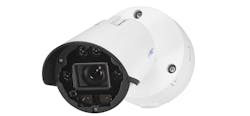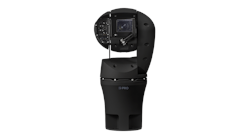If you are locksmith and haven’t already incorporated CCTV and video surveillance solutions into your product line, there is no better time than the present. At least that is what some of top security consultants in the industry are saying,
Video surveillance technology has undergone an explosive technology transformation over the last 20 years. It has migrated from a world of analog cameras and VCRs to a landscape of advanced CCTV systems that are mostly digital and others that are a sophisticated blend of converged network-centric devices. However, consultants like Hank Goldberg of Secure Global Solutions says if he had a locksmith business, his “interest would be off the charts.”
Take Advantage of CCTV Opportunities
“There are great new opportunities that will appear on the video horizon over the next two years; and let’s not call it CCTV – let’s talk about smart video. I don’t like to predict outcomes, but change is palpable. It is a great time to enter the space with consideration of how, voice, automatic door locks/video doorbells, and smart cameras are going to drive change in the commercial video space. Technology is ripe and will force an industry-first migration from home to business,” Goldberg says.
Although he feels that the residential model of Amazon’s home voice-control system Alexa may not appear in the same format when it hits the commercial sector, he does see video doorbells connected to door locks, smart video for controlling and monitoring interior spaces, facial and voice biometrics for access control with no keypads or traditional control points and additional smart devices connected to the Internet of Things.
If you haven’t already taken the plunge into the video market, there is a roadmap these consultants recommend if you lack the experience.
Acquiring the Needed Skills
“Locksmiths primarily perform work in the physical security market. Locksmiths looking to enter the CCTV market will need to expand their skills to provide electronic security as well.
At a minimum, these skills can be acquired through factory training, input from local manufacturer’s representatives, and instruction from reputable professional security organizations,” advises Jeff Pronschinske, who is a security market leader for Mead & Hunt, a nationally recognized A&E firm. “It may also be helpful to hire the support of a low-voltage security contractor until skills in electronic security can be fully developed.”
Pronschinske, who has over 30 years of experience in the design of integrated physical and electronic security systems and served in a variety of roles including consultant, contractor, manufacturer’s representative and material supplier, admits that since CCTV is becoming a far more common, accepted and affordable technology for almost any size security deployment, a locksmith that opts to expand his business would:
- Provide a holistic solution for the client that integrates the physical and electronic security systems.
- Promote life safety for the client by allowing them to view live video streams.
- Protect operational liability for the client by allowing them to record video events.
“In order to provide a holistic approach to meeting the security needs of a client, proper integration must occur between the physical and electronic security systems. This means that electronic door hardware and remote door monitoring must be properly coordinated with access control and CCTV system design. In addition to providing electric door hardware, locksmiths expanding their market with CCTV technology, could also consider offering access control, intrusion detection, and duress alarm technology,” Pronschinske adds.
Setting Realistic Business Expectations
Being realistic about what your business goals are regarding the addition of video to your business portfolio and taking it slow are two prime pieces of advice from Texas-based security consultant Ben Butchko. He warns that that the locksmith needs to be wary of setting expectations so high that the level of technical and practical application skills exceed the company’s capacity to deliver.
“Give the company time to learn and mature before promising the world. If you don’t have knowledge of computers and networks, and aren’t committed to gaining solid knowledge in those areas, then stay with standalone hard-wired analog camera-based systems,” says Butchko, who adds it’s probably a good idea to stick with smaller one to 16-camera systems when starting out.
Butchko also recommends that locksmiths consider finding an experienced subcontractor or other technical resource that can be brought in on projects to provide mentoring and support.
“Understanding and entering the video market requires an appreciation of what video can do, where it’s not applicable, and a basic understanding of data networks. You should identify your target customer and their willingness to purchase video solutions,” Butchko stresses. “Approach existing and candidate customers and ask them how they would view a video offering from your company, and if they would purchase these solutions from your company.”
As you move forward with your plans to venture into video, there are certainly myriad resources and training available to locksmith to help you learn how to assess CCTV technology, recommend and then implement systems for your customers.
“It has been our experience that manufactures of CCTV systems are more than willing to train contractors on the proper way to implement a system. When a brand name is associated with a particular deployment, it is in that vendor’s best interest to see that installation is done according to manufacturer’s recommendations,” says Pronschinske. “Locksmiths can gain valuable insights by attending professional trade shows where CCTV exhibitors are present. They can also obtain training through local community colleges, professional security organizations, and trade shows that offer seminars on low voltage electronic systems.”
Is There RMR To Be Had?
While options for establishing reoccurring revenue in your CCTV operations can be challenging, there are avenues that may provide regular income according to Jerry "Dutch" Forstater, who is the CEO and Chief Engineer for Professional Systems Engineering, LLC in Lansdale, Pa. He says that there is usually the recurring revenue to be had in the software storage of the video.
“Just like central alarms, this storage can be done in the cloud by the end user, by the locksmith or by the supporting manufacture through software licensing agreement,” explains Forstater. “There are so many different variations from five dollars a month to $100 a month, from one camera, to 12-plus cameras, from one mobile device to no mobile devices, from storage to no storage.”
Pronschinske adds that because security components have a shelf live there are RMR opportunities in CCTV that go beyond what the locksmith traditionally finds in door hardware.
“It has been our experience that door hardware is the most reliable and long-lasting of the components comprising a security system. With regular inspection, lubrication and maintenance, door hardware can last the entire life-cycle of a facility. On the other hand, CCTV systems have a shelf-life of approximately 10-15 years,” he says. “Electronic security is an evolving technology. Hard drives fail. Software requires upgrades. Many CCTV system installers have been known to negotiate extended service and maintenance agreements with the end user upon completion of the project. The required maintenance, upgrades and replacements associated with CCTV deployments can provide continued revenue streams for an experienced locksmith.”
Conclusion
Our consultants seem to agree that considering a CCTV systems offering is a technology path most electronic-savvy locksmith should at least explore, warning that building the business slowly and to scale and having realistic expectations of profit and growth are crucial.
“CCTV is not for the faint of heart, just like any new product line you introduce it will take hours upon hours, if not weeks upon weeks, of getting ready, training and having your resources available for purchase and installation, along with the crew to do the right installation,” Forstater stresses. “I suggest doing it in your own business, and your own home and your partner’s home before you launch. See how it goes. Those three installations would be a total expenditure of less than $10,000, more like $6000, but you get to see what the reality of project is really like.”






